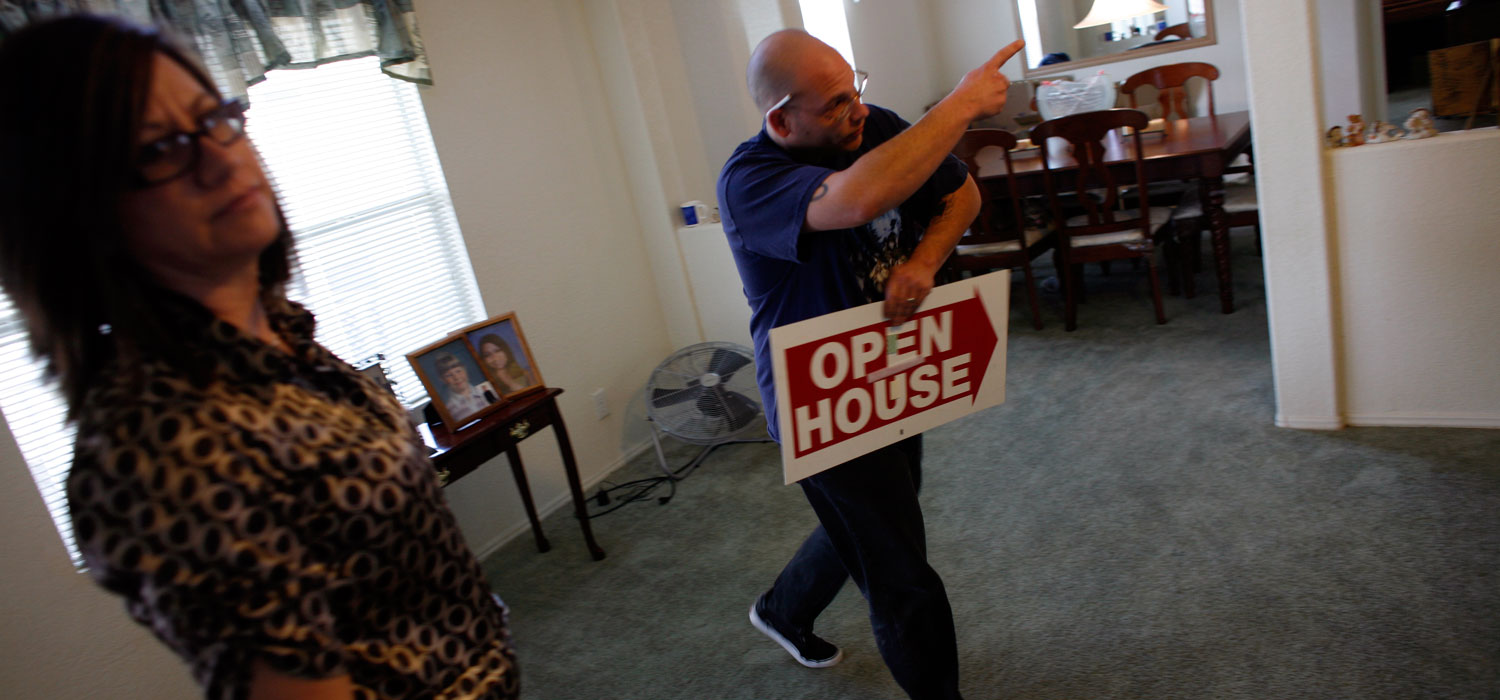
<p>Agent Teresa Micka, left, specializes in selling mobile homes including the home of Jason Abramson who was putting out an open house sign. Photo by Michael Robinson Chavez/Los Angeles Times via Getty Images.</p>
After more than three decades of decline, mortgage interest rates have started to rise. Since the 2016 election, rates have climbed from 3.54 to 4.10 percent (as of March 2, 2017), and most economists think this trend will continue. What do rising mortgage interest rates mean for the housing and mortgage markets?
A panel of experts discussed this question at a recent seminar cohosted by the Urban Institute and CoreLogic, confirming the likely outcomes we identified in December and adding some new insights.
1. Refinance originations will fall significantly
Frank Nothaft, chief economist of CoreLogic, showed that refinance booms end quickly when rates increase. Laurie Goodman, codirector of the Urban Institute’s Housing Finance Policy Center, agreed that because most current homeowners purchased at or refinanced at the recent low rates, few would find refinancing worth the cost and hassle as rates increase.
Close to half of mortgage originations in 2016 were refinances. The interest rate increases since Election Day are projected to cut refinance originations 45 percent, slashing the number of mortgage originations and making mortgage banking less profitable.
Saul Sanders, co-CEO of the nondeposit mortgage lender Shellpoint Partners, expects fiercer competition, narrower profit margins, and more consolidation in 2017. He said Shellpoint Partners is already taking cost-saving steps and shifting focus away from refinancing.
2. Access to credit is likely to expand
Marietta Rodriguez, national director of homeownership programs and lending at NeighborWorks America, explained that overly tight lending standards are one of the major hurdles for homeownership. As mortgage bankers try to compensate for the huge decline in mortgage originations, they will be more likely to lend to creditworthy borrowers who have less-than-perfect credit and who currently find it difficult to obtain a mortgage.
Sanders noted that with volumes down, underwriters will have more time to work on harder loans. Goodman noted that in 2000, the last time there was a prolonged rate increase, volumes plummeted and credit expanded. From 1999 to 2000, the FICO score of new originations remained unchanged, but the combined loan-to-value (LTV) ratio increased from 77.6 to 78.8 and the debt-to-income (DTI) ratio increased from 33 to 35.
3. Mobility may continue to slow as homeowners retain their mortgages longer
Homeowners’ geographic mobility has been declining since the early 1980s. Higher rates may exacerbate this problem, as homeowners are reluctant to move or trade up to a new, higher-rate mortgage.
As Nothaft showed, when rates are up, home sales are lower and homeowners tend to stay in their homes longer. Goodman agreed that the decline in mobility and refinances will affect investor trading of mortgages as well by creating mortgages with longer durations than investors’ models had predicted, which will push mortgage rates even higher.
4. Home prices will rise
While home prices are still affordable at the national level, thanks to mortgage interest rates being near historic lows, the factors causing higher interest rates (e.g., greater demand, pressure on prices, and higher incomes) will increase home prices.
The cost of new homes will increase as labor and materials are fueled by inflation, pushing up home prices from the supply side. “In 1984, 1994, 2000, and 2013, every time we have rate increases, we have increases in nominal home prices” said Goodman. “We expect this to be more pronounced, as there is a big demand-and-supply gap at the present time.”
5. Affordability will worsen
With increasing prices and lean housing inventory, the rate increase further pinches housing affordability, especially for low- and moderate-income borrowers, first-time homebuyers, and those living in high-cost areas.
Rodriguez pointed out that prepurchase services like homebuyer counseling could help mitigate this by encouraging “smart buying and shopping” by homebuyers and connecting them with local counseling agencies that may have access to affordable loan products and down payment assistance programs.
6. FHA modifications become more difficult to execute
Federal Housing Administration (FHA) modifications decrease monthly payments by reducing the interest rate to the current Freddie Mac Primary Mortgage Market Survey rate, plus 25 basis points (0.25 percent), and extending the term to as long as 30 years. With rates rising, FHA modifications in most cases will no longer generate a significant payment reduction. Goodman identified this as a major concern going forward and suggested that the FHA should consider making better use of the partial claim tool, where the US Department of Housing and Urban Development makes a no-interest loan to the borrower in an amount sufficient to reinstate the mortgage.
Let’s build a future where everyone, everywhere has the opportunity and power to thrive
Urban is more determined than ever to partner with changemakers to unlock opportunities that give people across the country a fair shot at reaching their fullest potential. Invest in Urban to power this type of work.